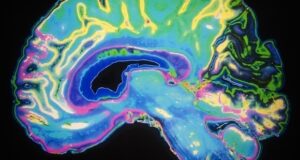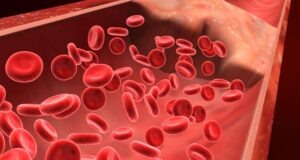
The first 3D images of a whole human thymus have been created using a specialized X-ray technique by researchers from UCL and the Francis Crick Institute.
These highly-intricate images showed that structures called Hassall’s bodies occupy a large fraction of thymic medulla, suggesting they might play a role in regulating thymic microenvironment and immunity.
In research published in Communications Medicine, the team used phase contrast computed tomography (PC-CT) to take detailed 3D images of thymi from developing fetuses or babies aged under one year. The images were created at the cutting-edge European Synchrotron Radiation Facility (ESRF) in Grenoble, France.
The thymus is responsible for programming the immune system to respond to external threats, such as viruses and bacteria. It begins producing T cells, a type of immune cell, 12-13 weeks into a pregnancy, which then go on to colonize other areas of the body.
But there remain many unanswered questions about the structure and function of the thymus, both in health and disease, which more detailed imaging may help to address.
The new images reveal the inner structure of the thymus and shed light on the size and evolution of areas called Hassall’s bodies, which form around 15 weeks into pregnancy. Until recently they were considered onion-like structures defined as the ‘graveyard of thymocytes’.
Professor Paola Bonfanti, an author of the study from UCL Institute of Immunity & Transplantation and the Francis Crick Institute, said: “The thymus is often neglected in research, but it can tell us a lot about how our immune system works. Key to this is how the organ changes during the first few years of life and throughout adulthood.
“New methods like PC-CT can start to unravel the thymus’ functions by preserving the overall integrity of the organ structure without having to slice it, which can help us understand what happens during disease where the organ architecture is compromised.”
The imaging method, which exploits the fact that X-ray trajectories bend slightly when they travel through different types of tissue, was able to show how the ratio of compartments in the thymus – known as the cortex and the medulla – changes with age.
The researchers showed that structures called Hassall’s bodies appear early during organ development and occupy about a quarter of the medulla in the thymus in children when the thymus is most active, suggesting that they play a role in immune regulation.
Given that access to synchrotron facilities is limited and expensive, the team then investigated whether a smaller-scale version of the X-ray technique could be used in a standard lab.
The method, called ‘edge-illumination’, exploits the same ‘trajectory bending’ principle in a standard lab space, while maintaining comparable quality to the synchrotron images.
The team confirmed that both the synchrotron and the edge-illumination system were able to distinguish between the cortex and medulla, as well as show Hassall’s bodies, in images of a 19-day-old thymus.
The lab-based X-ray system provides a more accessible way to study the 3D makeup of organs without having to disrupt or destroy tissues. It also avoids having to use a small part of a sample to represent the whole organ, which can be biased. In bringing the synchrotron to the lab, we hope the technique can be used by more researchers and applied to new challenges.”
Professor Sandro Olivo, author of the study from UCL Medical Physics & Biomedical Engineering
The scientists believe the method could be used to study how the thymus changes in medical conditions, like the presence of tumors, or how it shrinks with age.
Source:




